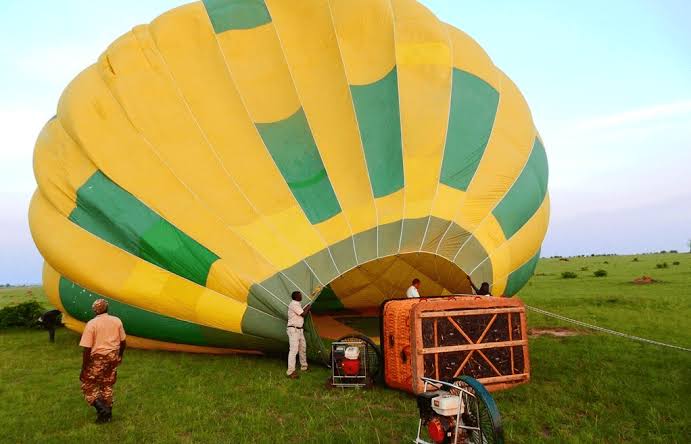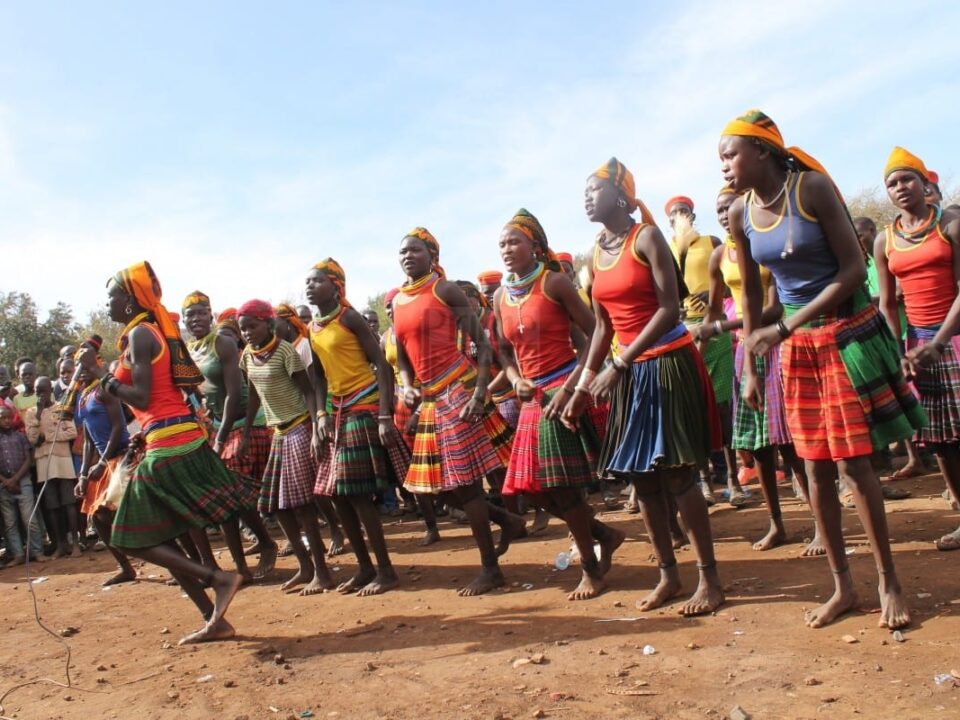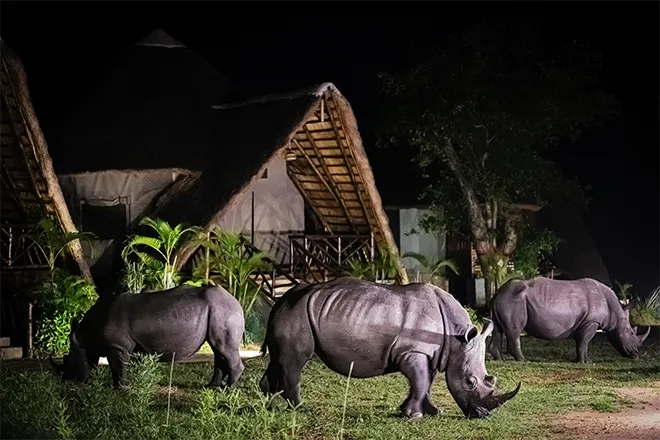- GET IN TOUCH WITH US:
- +256 753518160
- +256 777842166
- info@experiyatourcompany.com

What’s included in an all-inclusive Kenya safari?
November 20, 2025
What’s the best Kenya safari for honeymooners?
November 20, 2025Are Kenya’s Safari Lodges Eco-Friendly?
The growing desire to travel responsibly has transformed the global tourism landscape, and nowhere is this more evident than in East Africa’s safari industry. Kenya, celebrated for its sweeping savannahs, rich wildlife, and vibrant cultures, has become a leader in eco-conscious travel. As travellers become more aware of the impact their journeys can have on natural ecosystems and local communities, the question arises: Are Kenya’s safari lodges eco-friendly? The answer is a resounding yes—many of Kenya’s safari lodges have embraced a deeply rooted commitment to sustainability, conservation, and community empowerment. However, understanding what “eco-friendly” really means in the context of a safari lodge requires a closer look at their daily operations, their environmental practices, and their broader efforts to support the preservation of Kenya’s natural heritage.
Kenya is blessed with some of Africa’s most famous wildlife regions, including the Maasai Mara, Amboseli, Tsavo, Samburu, and Laikipia. The lodges and camps within these landscapes are increasingly designed or redesigned to minimize environmental footprint and maximize positive impact. Their eco-initiatives go far beyond simple recycling or solar lighting; they represent holistic approaches that integrate conservation, sustainable resource use, community partnerships, and careful tourism management. Kenya’s eco-lodges are built on the principle that preserving the wild is central not only to the tourism industry but also to the survival of wildlife and local cultures for generations to come.
Eco-Friendly Design and Architecture
One of the most visible elements of sustainability in Kenya’s safari lodges is their architectural design. Rather than imposing harsh structures on the landscape, many lodges use natural materials such as timber, thatch, stone, and canvas. These materials blend harmoniously with the environment, ensuring that buildings complement rather than dominate their surroundings. Tent-style camps in the Maasai Mara or Amboseli are especially known for their low-impact construction, which allows them to be dismantled with minimal disruption to the terrain.
Architectural design often considers airflow, natural light, and energy efficiency. Raised wooden platforms allow for better ventilation and protect soil and plant life beneath. Large windows, open-plan structures, and canvas walls reduce the need for artificial lighting and temperature control. These subtle but significant architectural choices reduce energy consumption while offering an immersive experience where guests feel closely connected to the wild.
Some lodges also incorporate rainwater harvesting roofs, green insulation technologies, and natural landscaping that avoids the use of chemicals. This ensures that the lodge remains a natural extension of its ecosystem rather than an artificial intrusion.
Renewable Energy and Reduced Carbon Footprint
Energy consumption is one of the biggest considerations in making safari lodges eco-friendly. As a result, many Kenyan lodges have transitioned toward renewable energy solutions—solar power being the most common and effective. Solar panels capture the abundant East African sunlight to generate electricity for lighting, refrigeration, communications, and water heating.
By relying on solar systems, lodges drastically reduce their carbon footprint while ensuring reliable energy even in remote locations. Some eco-lodges operate entirely off-grid, using battery storage to supply electricity throughout the night. Others incorporate hybrid systems that combine solar with backup generators, though modern eco-lodges strive to minimize generator use to reduce noise pollution and emissions.
In addition to renewable energy, lodges adopt energy-saving practices such as photovoltaic water heaters, low-energy bulbs, and timed lighting in common areas. Guests are often encouraged to participate in energy conservation efforts, fostering a sense of shared responsibility for the environment.
Water Conservation and Sustainable Water Use
Water is a precious resource in Kenya’s wilderness areas, and eco-lodges prioritize its conservation through advanced and thoughtful systems. Many lodges implement rainwater harvesting solutions to supplement their water supplies, capturing rainfall through roof systems and storing it in large tanks. This reduces pressure on local rivers, springs, and underground sources.
Greywater recycling is another key feature, where water from showers and sinks is processed and reused for irrigation. Lodges design their gardens with native plants that require minimal watering, creating beautiful but efficient landscapes that support local biodiversity.
Eco-lodges also use low-flow showerheads, eco-friendly flush systems, and filtered drinking water stations to minimize the use of bottled water. Some lodges provide reusable water bottles to guests to reduce plastic waste. By limiting water usage behind the scenes and encouraging mindful use among guests, these lodges ensure that vital water resources remain available for wildlife and surrounding communities.
Waste Management and Plastic-Free Initiatives
Responsible waste management is central to eco-friendliness in safari lodges. Many lodges follow strict protocols to reduce, sort, and recycle waste, ensuring that nothing harmful enters the ecosystem. Organic kitchen waste is composted and used in lodge gardens, while paper, metal, and glass are transported to recycling centers. Hazardous materials are handled carefully, with some lodges partnering with specialized waste management organizations to ensure proper disposal.
Plastic waste has become a major global concern, and Kenya’s safari industry has responded proactively. Many lodges have adopted plastic-free policies, eliminating single-use plastic bottles, straws, cutlery, and packaging. Instead, guests receive refillable water flasks, fabric shopping bags, and biodegradable alternatives where needed.
Some lodges even run local awareness programs, educating nearby communities about waste management and supporting local recycling initiatives. These efforts extend the impact of sustainable tourism beyond the lodge walls and into nearby villages and towns.
Wildlife Conservation and Habitat Protection
Eco-friendly lodges in Kenya are deeply engaged in wildlife conservation efforts. They operate within protected areas where conservation fees contribute directly to the protection of wildlife and habitats. However, many lodges go further by supporting anti-poaching units, wildlife monitoring programs, and habitat restoration projects.
Some lodges employ local researchers, conservationists, and rangers to conduct wildlife tracking, ecological surveys, and anti-poaching patrols. They collaborate with national parks, conservancies, and global conservation organizations to protect endangered species such as lions, elephants, cheetahs, rhinos, and wild dogs.
Because many lodges are located on private conservancies rather than public parks, they contribute directly to wildlife management, fencing removal, anti-poaching initiatives, and habitat preservation. These conservancies act as buffer zones that expand protected ecosystems, offering more space for wildlife to roam.
Community Engagement and Cultural Empowerment
No eco-friendly safari lodge is complete without a strong commitment to community empowerment. Local communities play a vital role in conservation efforts, and sustainable tourism cannot thrive without their involvement. Kenya’s eco-lodges recognize this connection and work closely with surrounding villages to promote education, employment, and cultural preservation.
Many lodges employ a significant percentage of their staff from local communities, providing training, career opportunities, and income that directly supports nearby families. Some lodges partner with community-run conservancies, ensuring that tourism revenue flows into healthcare, education, clean water projects, and women’s empowerment programs.
Cultural experiences offered at lodges—such as Maasai storytelling, traditional dances, or craft demonstrations—are conducted in ways that respect local traditions and ensure that communities benefit from tourism. This partnership strengthens cultural identity while reducing pressures on natural resources.
Eco-Friendly Safaris
Eco-lodges not only implement sustainable practices behind the scenes but also engage guests in the process. Many lodges offer guided nature walks, birdwatching activities, and conservation talks that deepen travellers’ understanding of the local environment. Guests learn about animal behaviour, local ecosystems, and ongoing conservation efforts.
Some lodges invite travellers to participate in citizen science initiatives, tree planting, or community conservation projects. This involvement enhances the guest experience while supporting long-term ecological goals.
Furthermore, lodges often encourage mindful habits such as turning off lights, saving water, staying on designated paths, and respecting wildlife at all times. These practices create a cooperative atmosphere where guests contribute to the sustainability of the environment they are exploring.
The Future of Eco-Friendly Lodging in Kenya
Kenya continues to lead the way in sustainable safari tourism. Innovations in renewable energy, water management, eco-architecture, and conservation practices are constantly evolving. As more travellers seek eco-conscious experiences, safari lodges are responding by expanding their environmental commitments and adopting new technologies that further reduce their ecological impact.
The future of Kenya’s safari industry lies in the synergy between responsible tourism, wildlife conservation, and community empowerment. Eco-lodges stand at the heart of this movement, ensuring that visitors can enjoy the beauty of the wild while contributing positively to its preservation.
Book Your Eco-Friendly Safari with Experiya Tour Company
For travellers looking to experience Kenya’s eco-friendly safari lodges while supporting responsible tourism, Experiya Tour Company offers expertly curated journeys that prioritize sustainability, comfort, and unforgettable wildlife encounters. Experiya partners with carefully selected lodges that uphold the highest environmental and ethical standards, ensuring that your safari contributes meaningfully to conservation and community wellbeing. When planning your Kenyan adventure, trust Experiya Tour Company to guide you through the most sustainable and inspiring safari experiences the country has to offer.




